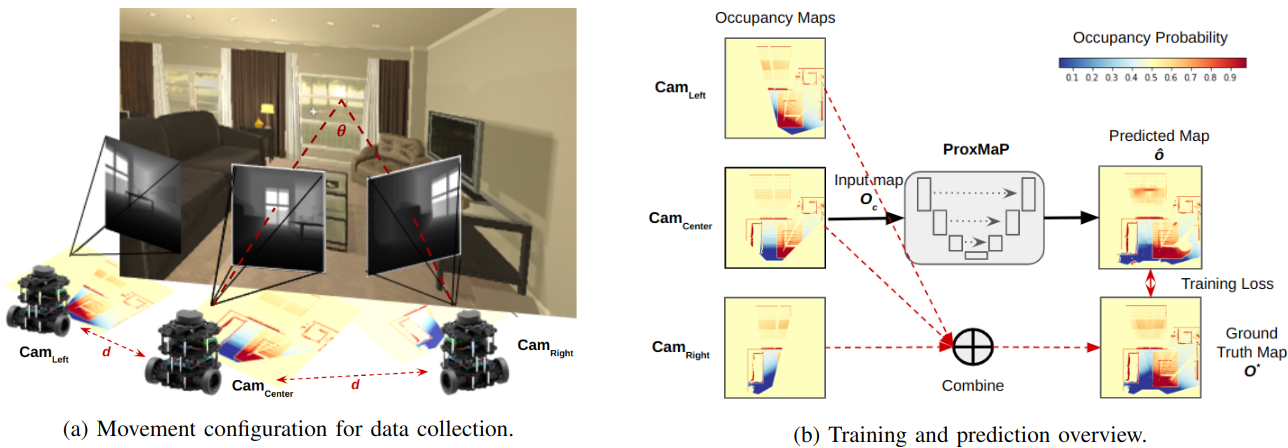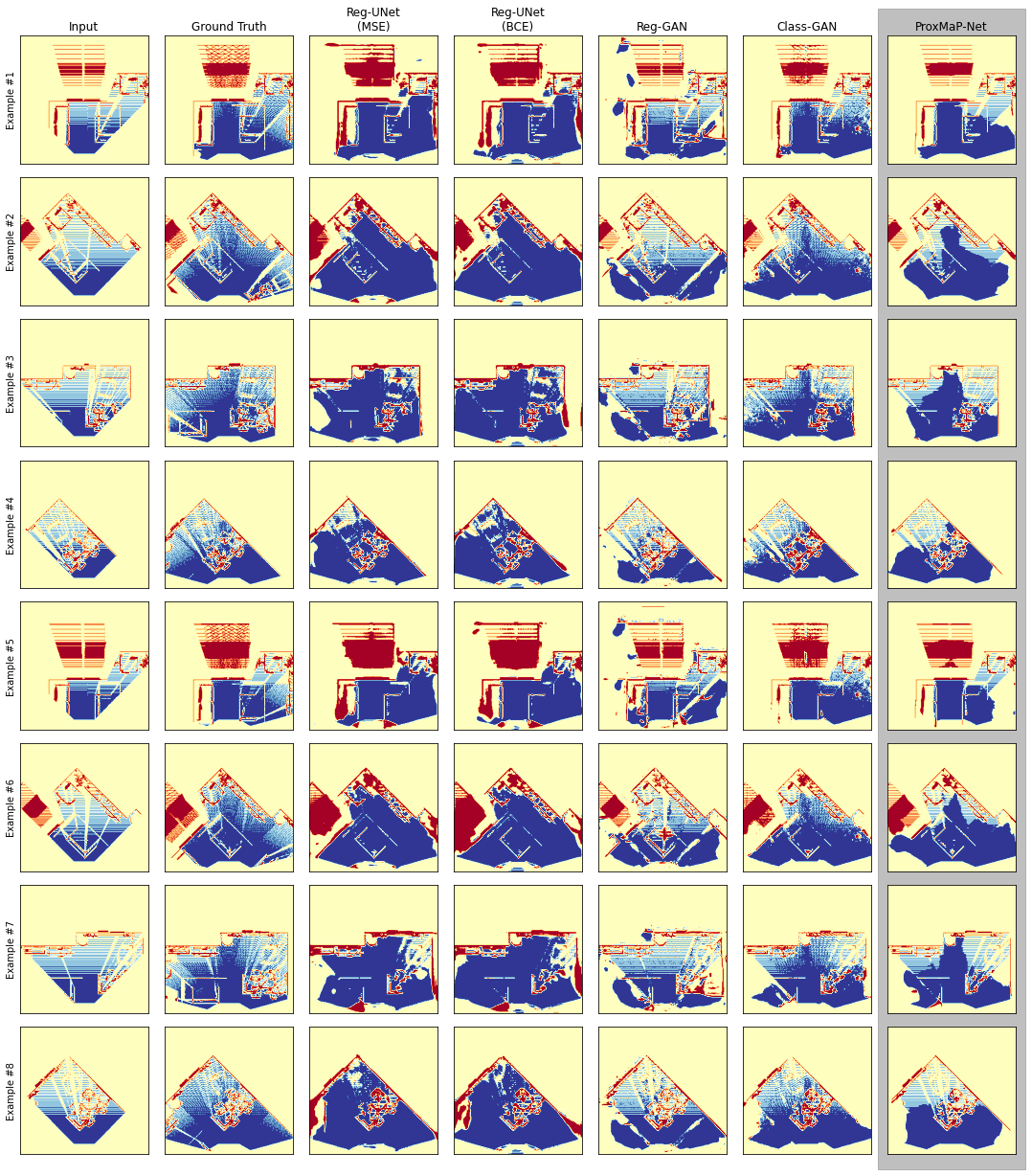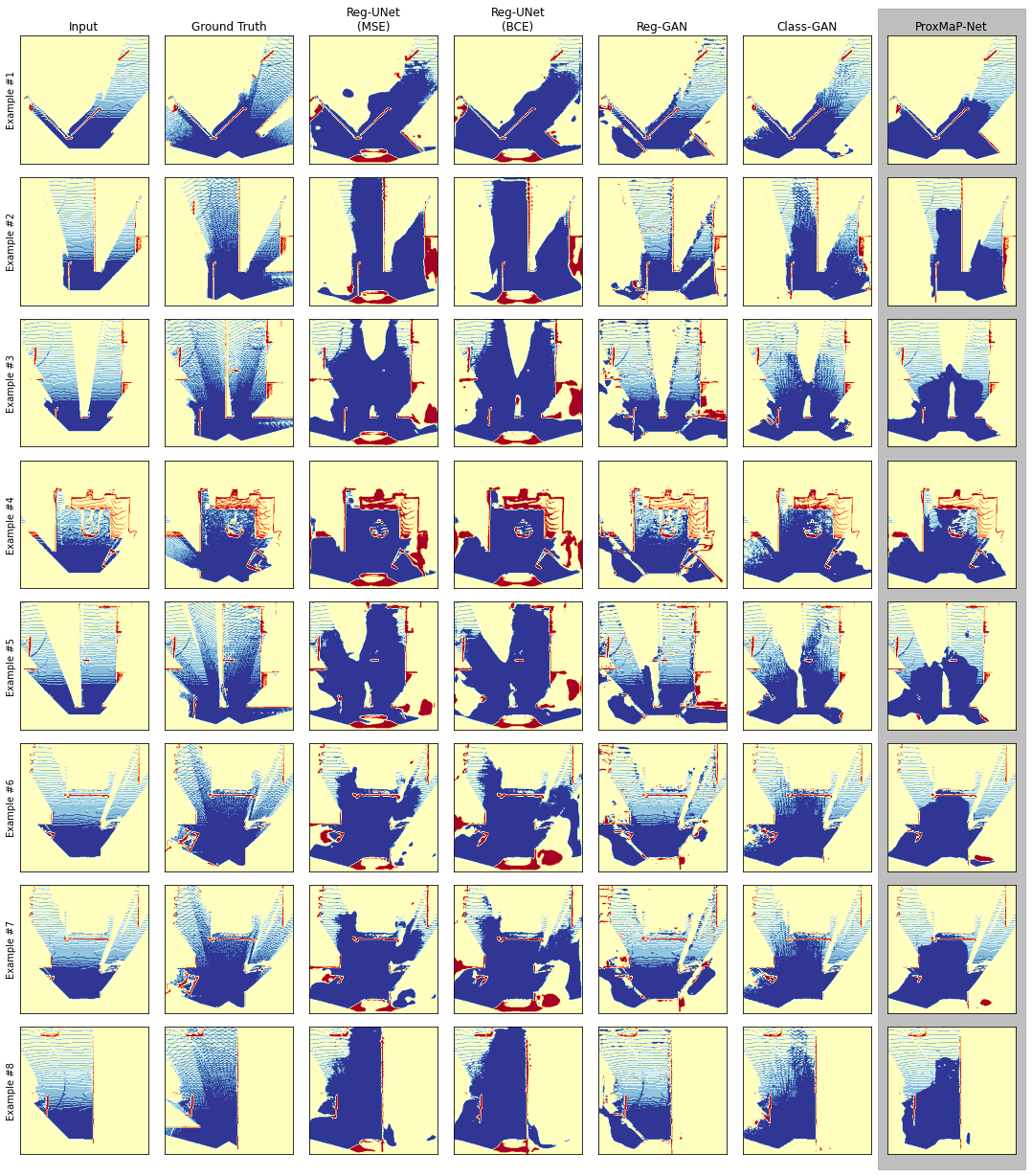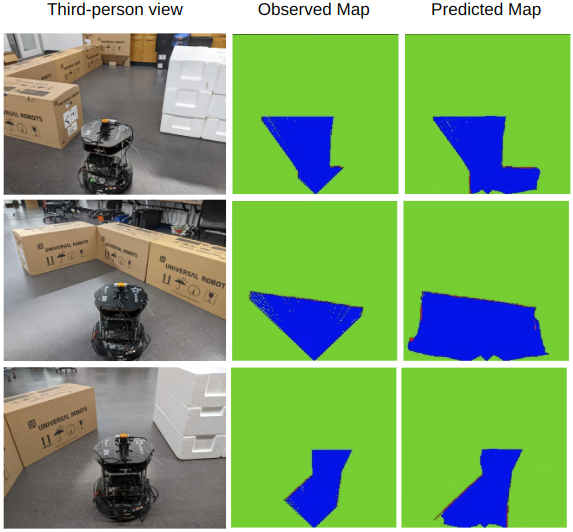In a typical path planning pipeline for a ground
robot, we build a map (e.g., an occupancy grid) of the envi-
ronment as the robot moves around. While navigating indoors,
a ground robot’s knowledge about the environment may be
limited due to occlusions. Therefore, the map will have many
as-yet-unknown regions that may need to be avoided by a con-
servative planner. Instead, if a robot is able to correctly predict
what its surroundings and occluded regions look like, the robot
may be more efficient in navigation. In this work, we focus
on predicting occupancy within the reachable distance of the
robot to enable faster navigation and present a self-supervised
proximity occupancy map prediction method, named ProxMaP.
We show that ProxMaP generalizes well across realistic and real
domains, improves the robot navigation efficiency in simulation
by 12.40% against the traditional navigation method.



